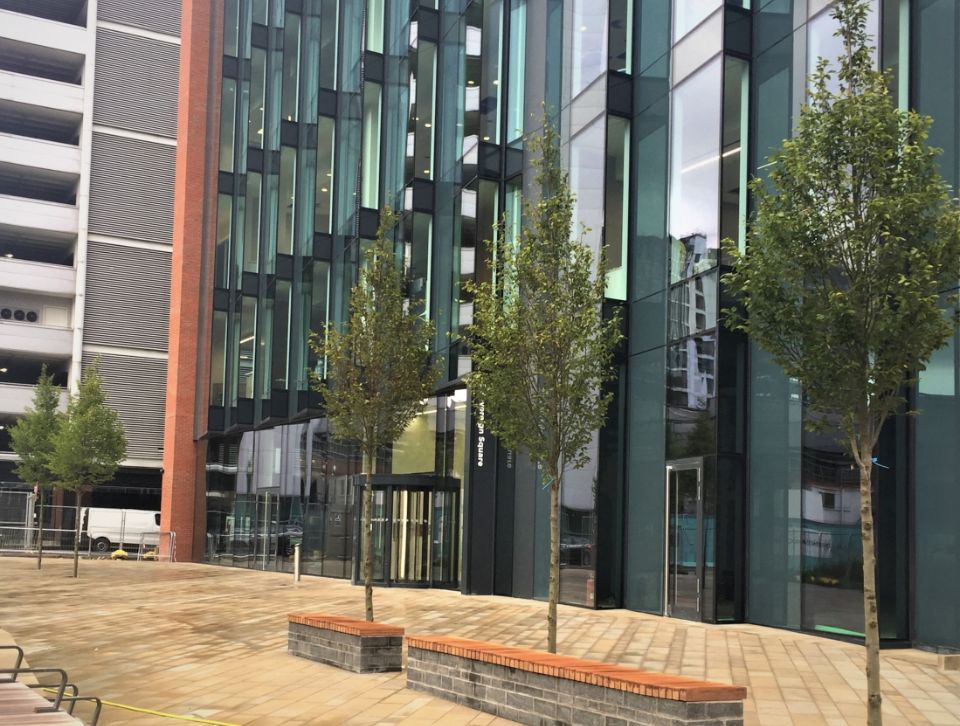Eight new plaza trees are providing visitors with welcoming green ambiance
With a lineage dating back to the Central Pacific Railroad in the late nineteenth century, the transit station along Shattuck Avenue in Downtown Berkeley evolved from an outpost depot to a full-service BART (Bay Area rapid transit) facility by the 1970s. In 2015, the station once again underwent a modernization project — this time prioritizing connectivity, sustainability, and multi-use space. Bioretention tree wells were installed in the new mixed-use plaza to help manage stormwater runoff, and the Silva Cell system — in addition to providing uncompacted soil for adjacent hardscape trees — is serving as an underground bridge between open planter areas, connecting soil beneath these tree wells and creating a continuous, uninterrupted space for optimal root growth. A total of 8 Silva Cell trees were planted in the new on-structure plaza (positioned above the underground transit platforms), which serves as both a pedestrian walkway and a gathering space.
Number of Silva Cells: 96 (3x) and 12 (2x)
Amount of Soil Volume Per Tree: 239 ft3 to 948 ft3
Number of Trees: 8
Type of Project: Plaza, On Structure
Project Designer: Community Design + Architecture
Project Contractor: USS Cal Builders
Installation Date of Silva Cells: Early 2018
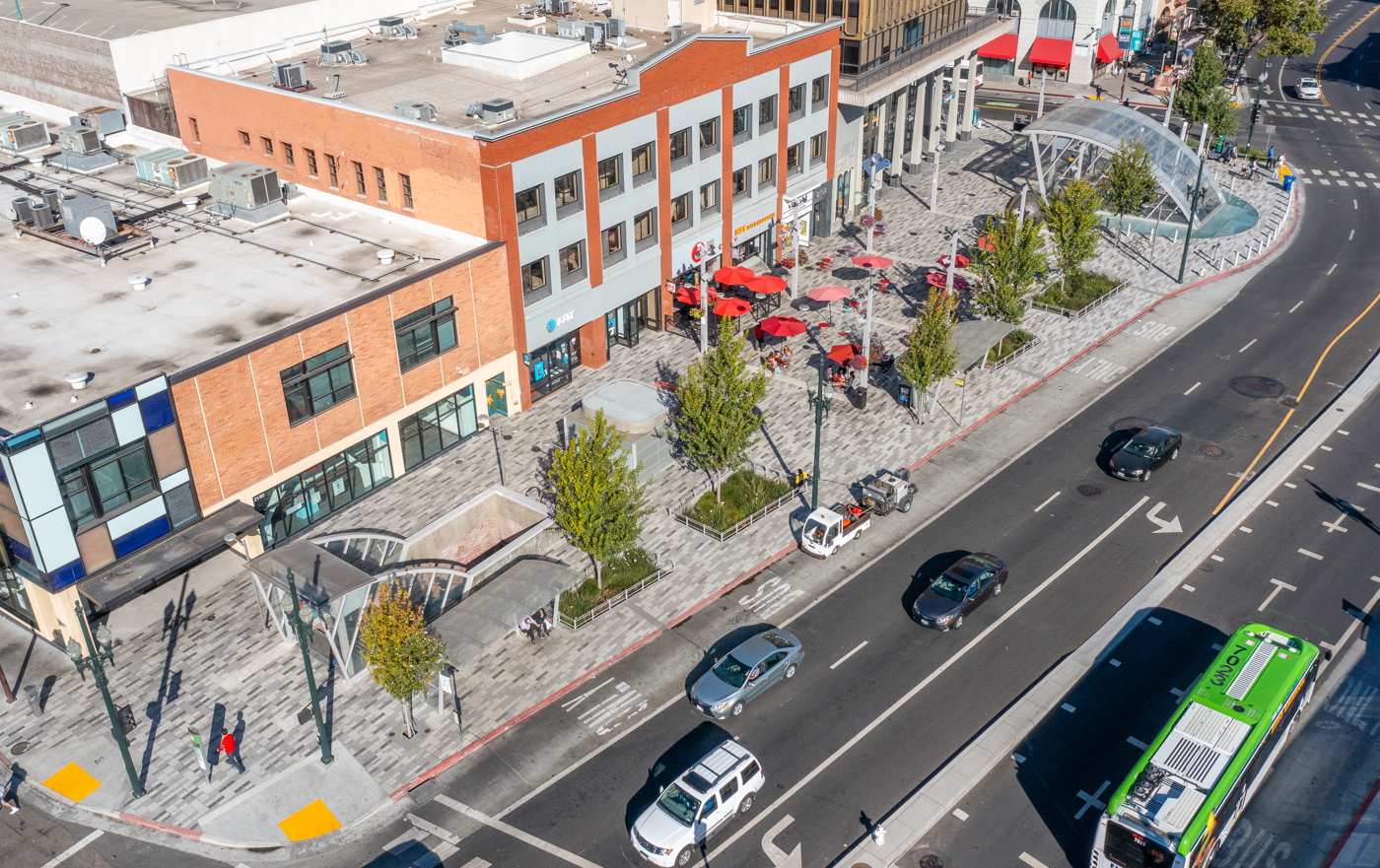
Recognized as one of the Bay Area’s high-traffic “gateway stations,” the Downtown Berkeley BART transit center was identified in a 2017 report as a high-priority facility in need of “modernization and re-envisioning.” Three overarching goals of the project were established in the same report: make transit work, connect to community, and create place. Improving transit functionality included increasing station capacity and reliability; connecting to the community and creating space, in turn, relied heavily on landscape design, led by the team at Community Design + Architecture.
The new plaza area, which runs along Shattuck Avenue from Allston Way to Center Street (and above the underground transit platforms), was built as a multi-use space that ensured functionality for commuters, pedestrians, and retail customers alike. As noted by Community Design + Architecture in their overview of the project: “The Downtown Berkeley BART Plaza and Transit Area enhances bus and Bay Area Rapid Transit [BART] connectivity, facilities bicycle and pedestrian activity, and modernizes the block long area with a flexible pedestrian plaza to enhance downtown’s vibrancy. Designed as a flexible open space with through circulation maintained at the edges, the plaza accommodates a range of events and daily activity including movable café seating, street fairs, performances, and other public and pop-up events.”
Integrating sustainable components and green space into the plaza was an important feature of the project. All of the development’s stormwater is being treated on site with the help of bioretention planters, four of which include new trees. Silva Cells are supplying an important advantage to these trees, working in tandem with these planters: installed under the hardscapes between these bioretention planters, they serve as a soil bridge. By supporting the hardscapes in these zones, their void space can be filled with lightly compacted soil — and, connecting to the open planting areas, the Silva Cells create a large, uninterrupted bank of shared soil for healthy root expansion.
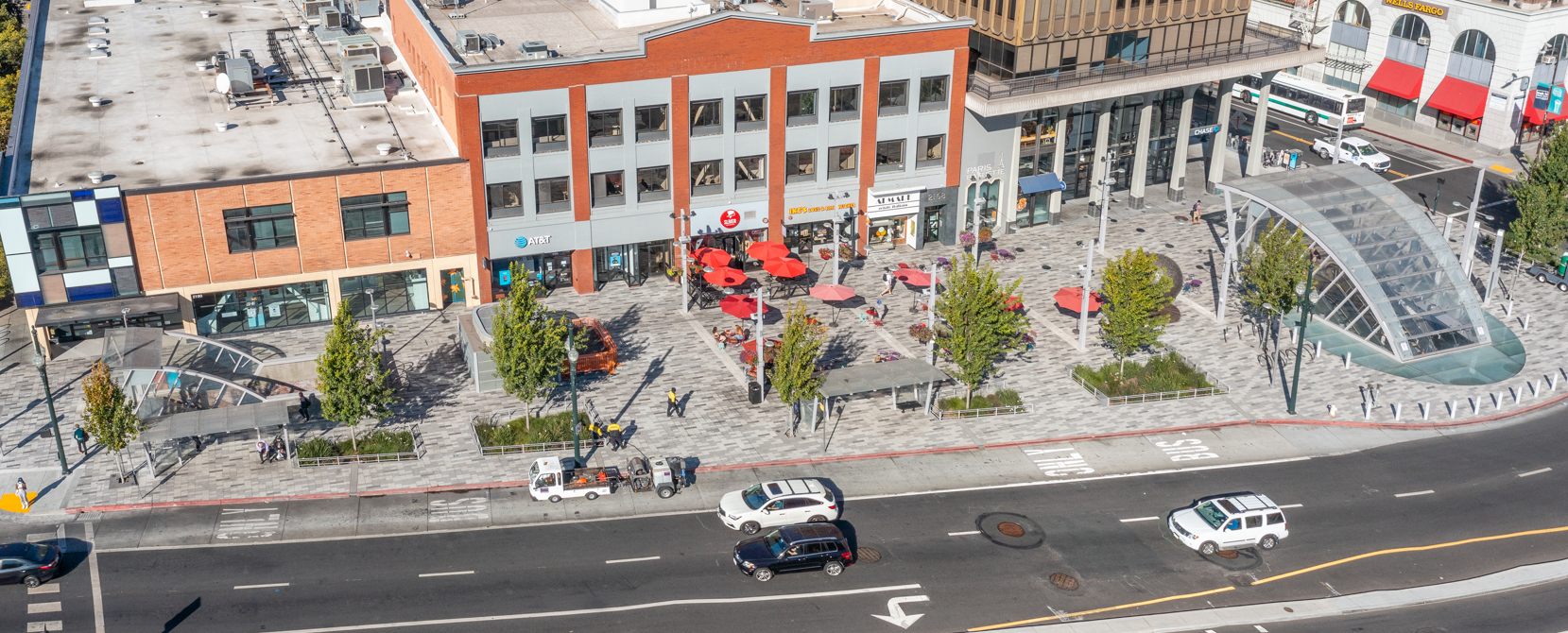
It’s important to recognize that some trees have thus far performed better than others — and to understand at least part of the reason why. A total of 8 trees were planted in Silva Cells at the new Berkeley BART Plaza: 4 in open planters and 4 in tree grates. As noted above, the Silva Cells are serving as an under-surface bridge in some areas: between the two most southern open planters and also connecting the two northern planters to one of the adjacent tree grate trees. In these zones, the total soil environment allows each tree to access nearly 1,000 cubic feet of soil.
On the other hand, 3 of the tree grate trees were planted in the hardscape, unconnected to adjacent open space and not provided access to enough lightly compacted soil for healthy growth (as little as 239 cubic feet in some areas). This helps explain why, after four years, some plantings are on their way to maturity (those with access to nearly 1,000 cubic feet of soil volume), while others (those with less than 300 cubic feet of uncompacted soil volume) are struggling.
Design considerations and budgets always play a role in these decisions — and it’s understandable that not all conditions will always be optimized. But the importance of soil volume cannot be understated — check out our blog to learn more.
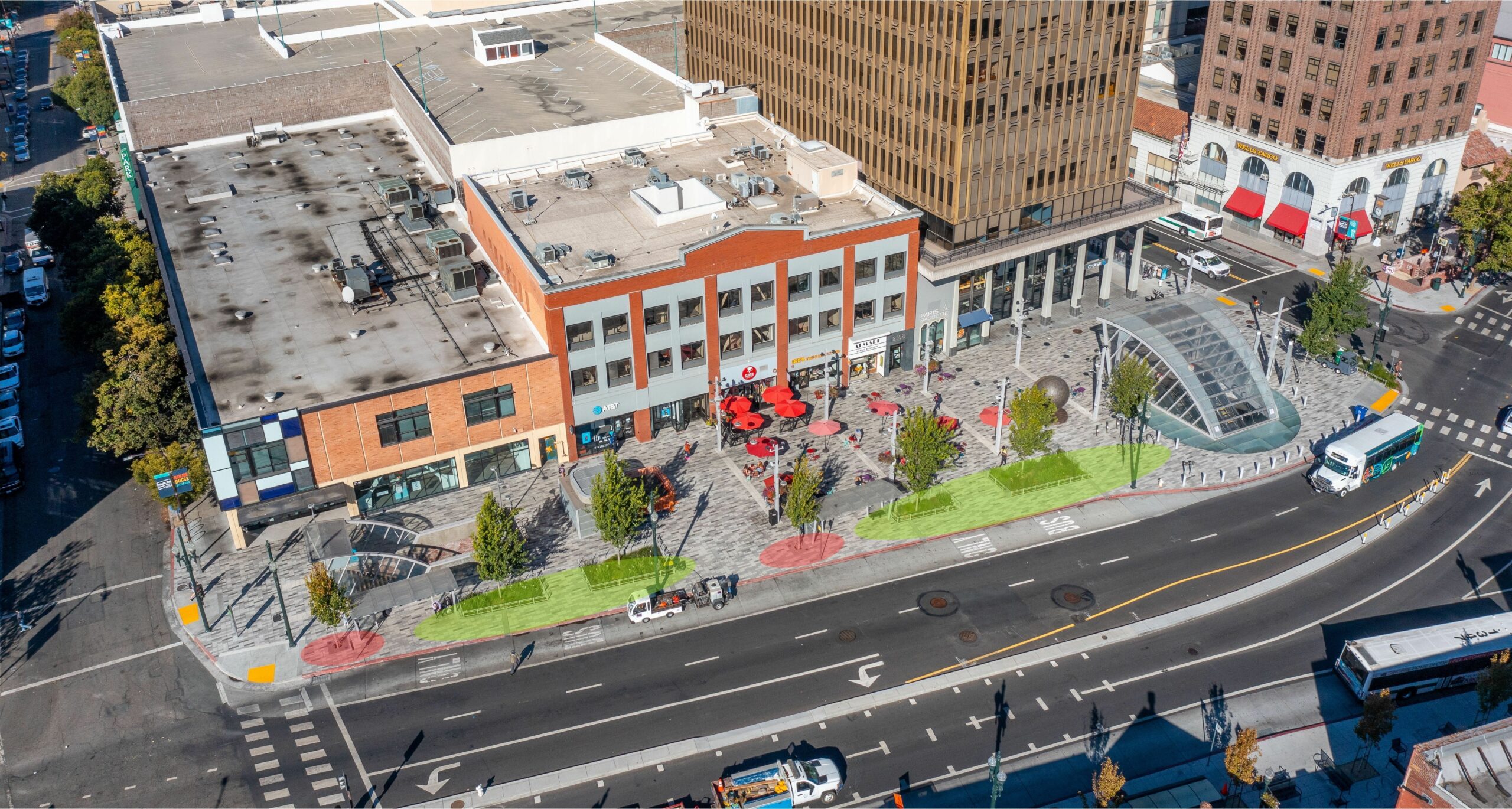
The red zones include very little uncompacted soil; the green zones instead have much greater soil volume in an uninterrupted shared environment — and the growth of the trees reflects this.
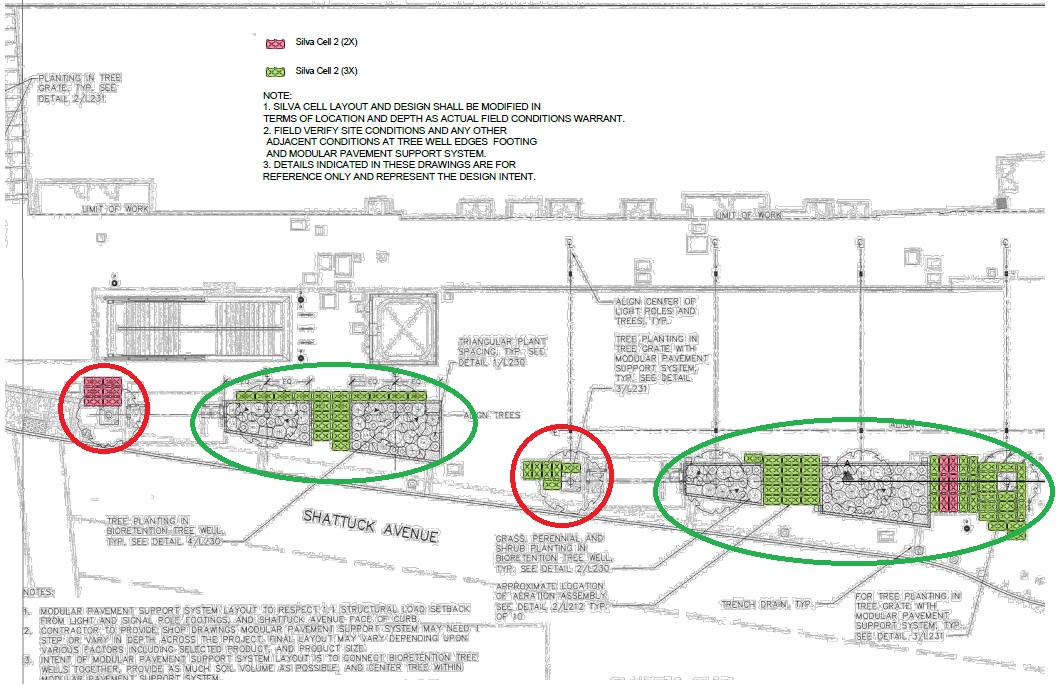
The success of the green zone areas can be chalked up, at least in part, to Silva Cells creating a large and continuous bank of soil for root expansion.
For other DeepRoot projects in California’s Bay Area, check out the following case studies:
–Palo Alto Junior Museum and Zoo
